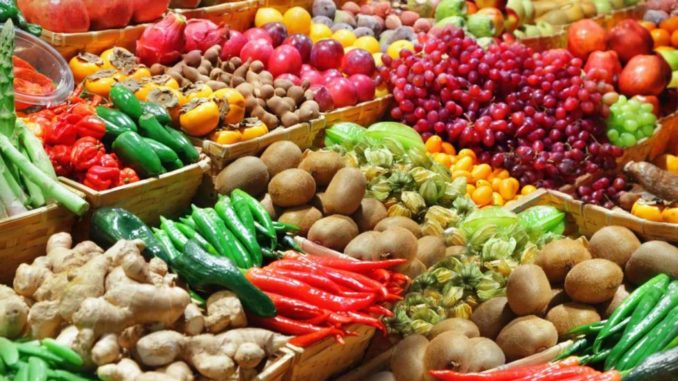
Global food commodity prices fell slightly in April after reaching their highest level in the previous month, the Food and Agriculture Organisation of the United Nations (FAO) has said.
The fall was led by a significant downturn in vegetable oil and cereal, according to details highlighted in the Food Price Index report released on Friday.
The index tracks the international prices of the most commonly traded food commodities.
The FAO Food Price Index averaged 158.5 points in April 2022, down 1.2 points (0.8 per cent) from the all-time high reached in March, though still 36.4 points (29.8 per cent) above its value in the corresponding month last year.
“The drop in April was led by a significant downturn in the vegetable oil sub-index, along with a slight decline in the cereal price sub-index.
“Meanwhile, sugar, meat and dairy price sub-indices sustained moderate increases,” it said.
The report said the FAO Vegetable Oil Price Index averaged 237.5 points in April, shedding 5.7 per cent from the record high registered in March, but remaining markedly above its year-earlier level.
“The decline was driven by lower world prices of palm, sunflower and soy oils, which more than offset higher rapeseed oil quotations,” FAO said.
It said the international palm oil prices dropped moderately in April, mainly weighed by subdued global import purchases amid high costs as well as a weakening demand outlook in China.
“Nevertheless, uncertainties about export availability out of Indonesia, the world’s leading palm oil exporter, contained further declines in international prices.
“In the meantime, world sunflower and soy oil prices also fell month-on-month, largely tied to demand-rationing following the record high prices seen lately.
“By contrast, rapeseed oil prices stayed firm in April, sustained by lingering global supply tightness,” the report said.
According to the report, the FAO Cereal Price Index averaged 169.5 points in April, down 0.4 per cent from the record high reached in March (since 1990).
It said after surging to a record level in March, international coarse grain prices dropped by 1.8 per cent in April, led by a 3.0 per cent decline in maize prices, as seasonal supplies from ongoing harvests in Argentina and Brazil helped ease the pressure on markets.
“World sorghum prices also declined in April by 0.4 per cent, while tight supplies pushed barley prices up by 2.5 per cent.
“International wheat prices edged upwards in April, albeit marginally, gaining 0.2 per cent.
“The continued blockade of ports in Ukraine and concerns over 2022 crop conditions in the United States of America kept prices elevated, but the price increases were moderated by larger shipments from India, higher-than-expected exports from the Russian Federation and slightly dampened global demand as a result of high prices.
“International rice prices in April went up 2.3 per cent from their March levels, sustained by a combination of strong local demand from various Asian exporters, purchases by Near Eastern and Chinese buyers and weather setbacks in the Americas,” it said.
MORE INCREASES
In the report, the FAO Sugar Price Index averaged 121.8 points in April, up 3.3 per cent from March, marking the second consecutive monthly increase and reaching levels more than 20 per cent above those registered in the corresponding month last year.
However, the report said larger-than-previously-anticipated availability in India, a major sugar exporter, bolstered the global supply outlook and prevented more substantial price increases.
The report said the FAO Meat Price Index averaged 121.9 points in April, up 2.2 per cent from March and setting a new record high.
It said the continued price strength stemmed from higher world poultry, pig and bovine meat prices.
It said World bovine meat prices increased moderately, reflecting high export volumes from Brazil, despite the low slaughter cattle supply.
“With this increase, bovine meat prices reached a new record high.
“Regarding ovine meat, the pandemic-related lockdowns and port delays in China eased the country’s meat purchases, pushing prices marginally lower,” the report said.
It said the FAO Dairy Price Index averaged 147.1 points in April, up 0.9 per cent from March, marking the eighth consecutive monthly increase and lifting the index 23.5 per cent above its value a year ago.
“In April, the upward trend of dairy product prices continued, driven by the persistent global supply tightness, as milk output in Western Europe and Oceania continued to track below their seasonal levels,” the report said.
END

Be the first to comment